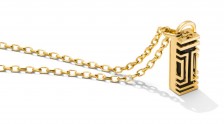Article: Women are 85% of the consumer market. But how do you reach them?
By Erica Eden for Co.Design.
The tagline of a Dos Equis ad reads, “Approach women like you do wild animals, with caution and a soothing voice.” I have to agree. Targeting a female audience requires a delicate, nuanced approach. Whether we live on the African plain or Manhattan, finesse with the opposite sex is regarded with respect and admiration.
Are designers ignoring sex?
I think about sex just as much as anyone, yet with less focus on good vibrations and more on good design. But sometimes I am alone in my particular focus on the sexes. Maybe that’s because everyone thinks they have some level of expertise on the subject. After all, we are all either one sex or the other. When it comes to designing for a specific gender, men can presume expertise on male consumers, and women can presume expertise on female consumers. We imagine we know all the answers. But that’s wrong. There is so much to learn, with huge benefits for designers. Understanding gender is one of many ways to understand people better, which in turn, helps us design better stuff for them to use.

How is designing for women any different?
We started the Femme Den, a think tank on design and gender, because we witnessed too much guesswork when it came to appealing to women. So many of our clients have admitted having limited success with women consumers, which comes from a narrow understanding of who women really are. Their common challenge is figuring out the “when” and the “how” to design products for a female user.
From where we sit, there are two ways to go about it. We can design for women openly and overtly, creating solutions for her only, like women’s razors or high heels. We call this “visible design,” because the gender story is visible to the user. Yet, most often, companies want to design products for both men and women, such as cameras or cars. But the female perspective in the product design industry can be hard to find, and as a result, women consumers can get left out. To appeal to both, you have to design for both, simultaneously meeting women’s unique needs. This is what we call “transparent design,” because the gender story is vital yet invisible, veiled under the simple notion of “good design for all.”
Yet the choice between visible and transparent design requires an awareness of gender and a delicate, nuanced approach. Visible design “gone bad” can mean alienating women who don’t want separate solutions that imply being female means being different. Transparent design “gone bad” can mean underestimating our differences and designing under the misconception that men and women are the same, resulting in limited appeal. Getting it right means gaining the trust and loyalty of women, the world’s largest economic power making up to 85% of consumer purchases in the “she-conomy.” For our clients, it means millions of dollars in their pockets and winning products in the market.
The Femme Den agenda is to lead the dialogue about what works with women and what doesn’t, with the underlying goal of understanding people better. Companies have so much to gain from genuinely addressing gender through good design. The trick is to choose the approach wisely and to proceed with caution.
Originally posted on Fast Company.
Erica Eden / Associate Director of Design & Strategy / erica.eden@smartdesignworldwide.com





